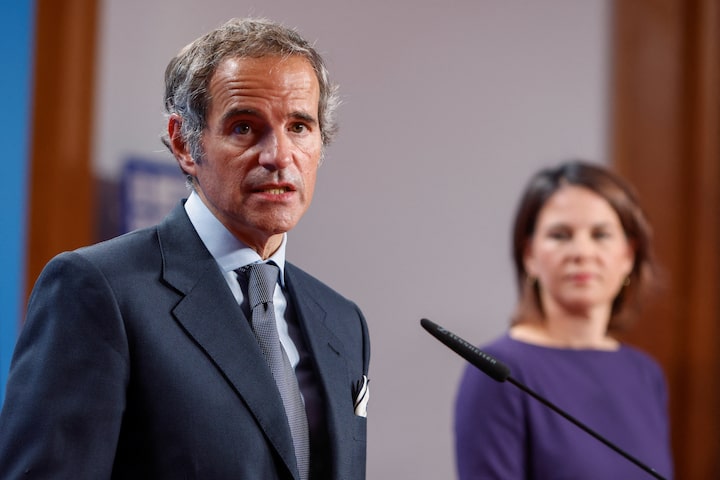Skin bleaching is a contentious practice which requires the use of chemicals or cosmetic procedures to lighten one’s skin tone. While the desire for fairer skin has persisted in numerous civilisations throughout history, modern skin bleaching has received substantial attention due to its ubiquity and potential health hazards.
The fundamental causes of skin bleaching are profoundly ingrained in historical, cultural, social, and economic factors. Historically, fair skin has been associated with luxury, power, and beauty in many countries. The remains of colonialism and colourism have fostered the perception that lighter skin is superior, leading to the adoption of these ideas by persons seeking social acceptance.
The media also has a large influence on societal beauty standards. The representation of fair-skinned people as more desirable in ads, movies, and other forms of media adds to the marketing of fair skin as the ideal beauty standard, increasing demand for skin-lightening products. Individuals with darker skin tones may encounter discrimination and prejudice in some communities, resulting in decreased self-esteem and a desire to adhere to prevailing beauty standards. Skin bleaching is frequently viewed as a way to increase one’s appearance and social acceptance.
The skin bleaching industry is a lucrative market, and the demand for these products generates significant profits for manufacturers and sellers. Economic disparities and limited access to education and employment opportunities in specific communities may drive individuals to believe that lighter skin offers better prospects for success.
Skin bleaching can have a variety of harmful health and psychological implications for those who indulge in the practice.
1. Health Risks: Many skin bleaching treatments contain dangerous substances such as hydroquinone, mercury, and corticosteroids, which can cause severe skin damage. Prolonged use of these products can cause skin thinning, discolouration, hyperpigmentation, acne, and an increased susceptibility to skin infections. Some substances have also been connected to serious health issues such as renal damage, liver poisoning, and cancer.
2. Psychological Impact: The desire for lighter skin can have a significant psychological impact on individuals. Struggling to satisfy unrealistic aesthetic standards can result in low self-esteem, body dysmorphic disorder, anxiety, and despair. Although skin bleaching can bring momentary confidence, the underlying psychological disorders frequently endure.
3.Colourism Perpetuation: Skin bleaching fosters colourism, or discrimination based on skin colour within a specific culture. This perpetuates the perception that lighter skin is more attractive, which can lead to social separation, marginalisation, and increasing self-hatred in those with darker skin tones.
4. Cultural and Identity Loss: Skin bleaching can erode cultural heritage and individual identity. Embracing one’s natural skin tone promotes diversity, inclusivity, and pride in one’s ethnic or racial background. The widespread practice of skin bleaching can contribute to the loss of cultural uniqueness and homogenisation of beauty standards.
Societal Impact of Skin Bleaching
The impact of skin bleaching extends beyond the individual level and has broader societal implications. Society plays a significant role in the prevalence of skin bleaching. Deeply rooted biases and beauty standards favouring lighter skin perpetuate the belief that a fairer complexion signifies beauty, success, and social acceptance. This creates immense pressure on individuals to conform, leading to the widespread use of bleaching products. The societal impact is detrimental, fuelling colourism, self-esteem issues, and discrimination.
The popularity of skin-bleaching products reinforces the notion that fair skin is the epitome of beauty. This perpetuates a narrow definition of attractiveness, reinforcing stereotypes and creating unattainable beauty ideals that can be exclusionary and harmful to individuals with darker skin tones. It supports the message that one’s worth is determined by appearance rather than character or abilities.
Skin bleaching tends to fuel Social Inequality Skin bleaching often stems from social pressures and discrimination. By valuing lighter skin over darker skin, societies contribute to a system of social inequality based on skin colour. This creates a cycle where darker-skinned individuals face limited opportunities, prejudices, and reduced social mobility. Skin bleaching can exacerbate these inequalities, perpetuating a harmful cycle of discrimination.
It also has an adverse effect on future generations. Normalisation of skin bleaching can have long-term consequences. Parents who bleach their skin may pass on their ideas and habits to their children , prolonging the cycle of self-hatred and promoting society’s demand for lighter skin. This can result in a generational loss of cultural identity and a warped view of beauty, further marginalising people of colour.
Economic exploitation is another unintended consequence. The skin-bleaching industry feeds on individuals’ anxieties and wishes for lighter skin. This exploitation disproportionately impacts vulnerable populations, frequently focusing on people with little access to education or resources. Profit motivation drives the development and promotion of potentially dangerous skin-bleaching products, endangering consumers’ health and well-being.
Tackling the issue of skin bleaching requires a comprehensive approach that addresses its underlying causes and provides alternative narratives of beauty and self-acceptance:
1. Education and Awareness: Promoting education and awareness about the dangers and consequences of skin bleaching is crucial. Public health campaigns, school curricula, and community outreach programs can help disseminate accurate information about the risks associated with skin bleaching and challenge societal beauty standards.
2. Promotion of Inclusive Beauty Standards: Encouraging diverse representations of beauty in media, fashion, and advertising can help challenge the notion that fair skin is the only standard of beauty. Celebrating and embracing all skin tones can promote inclusivity, boost self-esteem, and foster a greater appreciation for cultural diversity.
3. Empowerment and Self-Acceptance: Encouraging people to embrace their natural skin tones and encouraging self-acceptance can help mitigate the detrimental effects of social beauty standards. Promoting positive body image, self-esteem, and resilience can help people resist the demands to bleach their skin and create a healthy feeling of self-worth.
4. Regulation and Enforcement: Governments and regulatory organisations should impose stringent rules on the manufacture, sale, and labelling of skin-whitening goods. Prohibiting the use of hazardous materials and conducting frequent inspections can help to protect consumer safety and well-being.
5. Addressing Socioeconomic Inequalities that contribute to the demand for skin bleaching is crucial. By addressing systemic inequalities and providing equal access to education, employment opportunities, and healthcare, societies can reduce the social pressures that drive individuals to resort to skin bleaching as a means of social acceptance.
Skin bleaching is a complicated subject with far-reaching consequences for both individuals and civilisations. Addressing this issue will necessitate a collaborative effort. Society must question and reinvent beauty standards, promote diversity, and recognise various skin tones. We can remove the harmful influence of cultural expectations and create a more powerful and equal environment for all by cultivating acceptance and inclusivity. We can work toward a more inclusive and accepting society that values diversity and rejects harmful beauty ideals by promoting inclusive beauty standards, empowering individuals to embrace their natural skin tones, and addressing the underlying socioeconomic factors that drive the demand for skin bleaching.
Sources
- https://www.uspharmacist.com/article/experts-issue-warning-about-the-dangers-of-skin-bleaching
- https://www.ncbi.nlm.nih.gov/pmc/articles/PMC8356578/
- https://www.webmd.com/drugs/2/drug-22214/skin-bleaching-topical/details
- https://amp.cnn.com/cnn/2019/01/15/health/banning-bleaching-products-in-africa/index.html
- https://journals.library.columbia.edu/index.php/bioethics/article/view/6599
- https://www.bbc.com/news/health-49851669.amp




